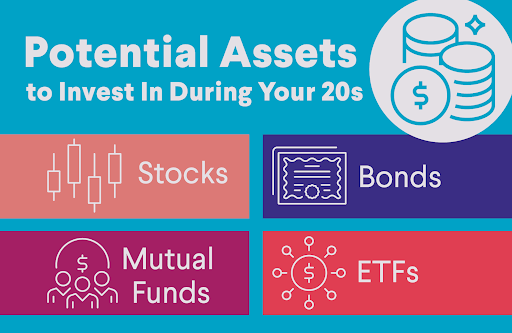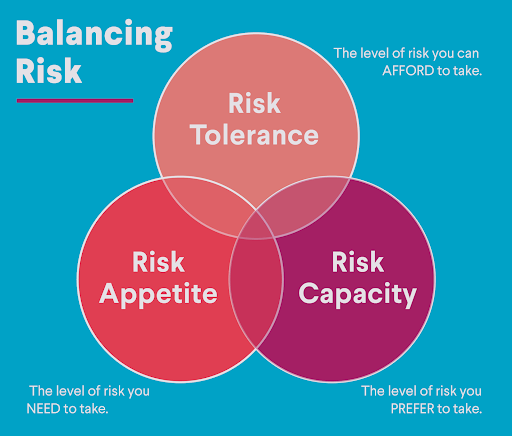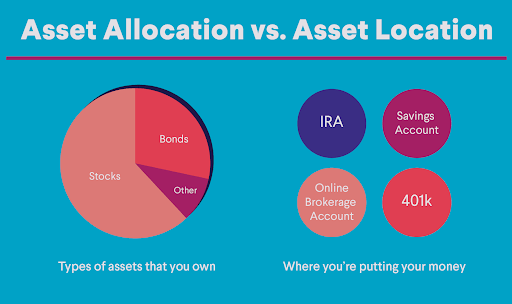Undergraduate vs. Graduate Student Loans: 7 Ways They Differ
If you’re heading off to grad school, you’re probably not a newbie at the financial aid process after your years as an undergraduate. You might even have a few things to say about the increase in graduate student loan borrowing.
Out of the over $1.74 trillion in student loan debt in the United States, dollars borrowed by graduate school students are rising more quickly than undergraduate debt.
However, it’s a mistake to assume that graduate student loans are the same as undergraduate loans. There are actually significant differences between the two, and knowing those differences can be the key to saving money on your grad school debt in the long run.
Keep reading to learn key differences between undergraduate and graduate student loans.
Key Points
• Graduate students are classified as independent on the FAFSA, simplifying the application process for federal student aid without needing parental financial information.
• Interest rates for federal loans are generally higher for graduate students compared to undergraduate loans, impacting the overall cost of borrowing.
• Unlike undergraduate loans, graduate student loans do not have subsidized options, meaning interest accrues even while studying.
• Borrowing limits for graduate students are significantly higher than for undergraduates, allowing for greater financial support but also leading to larger debt burdens.
• Graduate students may secure competitive rates on private loans due to established credit histories, but these options often lack the protections found in federal loans.
What Does Undergraduate Mean?
In the context of student loans, an undergraduate refers to someone who has not yet completed their bachelor’s degree.
An undergraduate student is someone who is pursuing their associate or bachelor’s degree.
Associate degrees are generally offered at two-year community colleges. A bachelor’s degree generally takes about four years to complete and is often completed at four-year colleges or universities. There is a wide variety of bachelor degree programs including history, English, engineering, math, chemistry, and more.
Three of the most common types of bachelor’s degrees include Bachelor of Arts, Bachelor of Fine Arts, and Bachelor of Science. Program requirements for undergraduate degrees will vary by institution.
Recommended: A Guide to Choosing the Right College Major
What Does Graduate Mean?
A graduate is someone who has successfully completed a specified course of work. In terms of a graduate student, it’s any student who has completed their bachelor’s program and is working toward a more advanced degree.
Graduate degrees include master’s, doctorates, PhD’s, MBA’s, and JD’s. Depending on the program coursework, a graduate degree can take anywhere from one to six years to complete. Law students, medical students, and PhD candidates are all examples of graduate students.
Recommended: Applying to Graduate School: Smart Tips & Strategies
Differences Between Undergraduate and Graduate Programs
Beyond differences in coursework, there are differences when it comes to student loans and financial aid options for undergraduate and graduate students.
1. Dependency Status
As a graduate student, you’ll still need to complete the Free Application for Federal Student Aid (FAFSA®) to qualify for federal student aid. However, you no longer need to include financial information about your parents on the form.
That’s because students who are pursuing either a master’s or doctorate degree are considered to be independent students.
There are a couple of key benefits associated with being an independent student. First, it helps streamline filling out the FAFSA. Second, as an independent student, you’ll likely report much less income because your family’s earnings generally are no longer considered when financial aid eligibility is calculated, which could potentially give you access to additional aid options.
There are circumstances where undergraduate students can also be considered independent, but it’s usually more common with graduate students.
2. Interest Rates on Federal Student Loans
The 2024-25 federal student loan interest rates for graduate and professional students are 8.08% for Direct Unsubsidized Loans for graduate or professional students and 9.08% for Direct PLUS Loans — much higher than the 6.53% interest rate on federal undergraduate student loans.
Graduate students can use federal student loans to pay for qualifying education expenses, including tuition, fees, college textbooks, and living expenses.
PLUS Loans are funded by the U.S. Department of Education and require a credit check, although the credit requirements are not as stringent as they would be with a private lender. At 9.08%, they have the highest interest rate of all the federal student loans.
Federal loans also have fees that should be factored into the total cost of borrowing. For Direct Subsidized and Unsubsidized Loans, the loan fee is 1.057%. For Direct PLUS Loans, the fee is 4.228%.
3. Loan Type
Grad school federal loans start accruing interest while you’re a full-time student, unlike subsidized loans for undergraduates.
For example, say you borrowed $20,000 in Direct Unsubsidized Loans (for graduates) to cover the cost of tuition when you started the program. When you factor in the current disbursement fee of 1.057%, you would have received approximately $19,789.
Since this loan type is unsubsidized, it will accrue interest while you attend school. And even though you received $19,789, interest will accrue based on the loan total of $20,000. If the program is two years long and you made no payments during that time, the loan would have accrued approximately $3,233 (assuming the interest rate stays the same 8.08% for those two years). For undergrads with subsidized loans, the interest clock doesn’t start until after graduation.
4. Borrowing Limits
Typically, graduate students can borrow $20,500 annually in Direct Unsubsidized Loans, although there is currently a lifetime cap of $138,500 when undergrad loans and graduate school Direct Loans are combined. If you’re in a qualifying health field, you may have a higher lifetime limit, potentially up to $224,000.
Compare that to annual limits for undergraduates, and they’re typically capped at $5,500 during year one; $6,500 for year two; and $7,500 for subsequent years, with a total availability of $31,000.
Having said that, although graduate students have more flexibility in how much can be borrowed, it can be challenging to pay back those higher amounts of debt.
Recommended: 6 Strategies to Pay Off Student Loans Quickly
5. Interest Rates on Private Student Loans
Private student loans aren’t backed by the federal government; they’re issued by private lenders or banks.
If you’ve already established a solid credit history and/or have steady income coming in, those are important cornerstones that may help you qualify for more competitive rates on private student loans. This is in contrast to the typical undergrad, who may be new to credit and lending entirely, and doesn’t usually have a well-paying, full-time job.
Keep in mind, though, that private student loans don’t necessarily offer the same borrower protections as federal student loans — things like income-driven repayment plans or loan forgiveness options. Because of this, federal loans are usually prioritized over private student loans.
Recommended: Private Student Loan Guide
6. Student Loan Refinancing
While anyone with higher education debt can apply to refinance student loans, there are a couple reasons why this option tends to be more popular with grad students.
First, in order to qualify to refinance loans at a lower interest rate than what a borrower may currently have, a strong credit history that includes a positive track record of paying debts is important — and proof that you make enough money to pay back the loan (among other factors that will vary by lender). Depending on a graduate student’s background, there is a chance that they might be viewed as a more stable lending choice than an undergraduate.
Additionally, some graduate programs offer the potential for students to increase their earning potential after graduation, which also could be appealing to private lenders.
Student loan refinancing won’t be the right option for everyone. Federal loans come with a variety of protections and benefits, like income-driven repayment plans and loan deferment. When you refinance a federal loan, it becomes a private loan, and will no longer qualify for any federal benefits.
7. Federal Grants
Even if you were eligible for a federal Pell Grant the last time around, you can’t count on that for graduate school. A Pell Grant is a need-based grant that does not need to be repaid, and is typically awarded only to undergraduate students.
There are a variety of other opportunities available to grad students to help them finance their education, including some grad school scholarships, other grants, and fellowships. Grants are generally offered based on financial need, while fellowships are awarded based on a student’s academic performance and research.
Recommended: Grants for College
Thinking Outside the Box: Paying for Graduate School
When you think about paying for graduate school, it’s natural to consider student loans, but there are additional avenues likely worth pursuing. For example, your school of choice may offer scholarships, fellowships, and grants.
Typically, the college will use the information in the FAFSA to decide what funding, if any, they can offer you. Other times, though, there may be separate applications unique to your school; you can ask for specifics at the financial aid office. Sometimes, the award might be small; other times, it might be full tuition reimbursement.
Becoming a Teaching or Research Assistant
Some graduate students work on campus as teaching or research assistants. These opportunities could offer the opportunity for students to expand their skill set while earning some income.
Working Full-Time as a Grad Student
If you’re pursuing a graduate degree while working full time, you can check with your employer to see if they offer a tuition reimbursement plan. If they do, the program will have its own parameters and processes.
Sometimes, if you accept funds from this program, you’ll need to stay at the company for a predetermined amount of time; other times, they might fund only certain degrees.
Finding Scholarships
You can also use databases like FastWeb or SoFi’s scholarship search tool to see if there are private scholarships available that you might qualify for.
Want access to more student loan resources? Explore our student loan help center to help guide you in your debt repayment!
The Takeaway
Graduate students are those who have completed some type of bachelor’s program and are pursuing an additional degree, such as an MBA, master’s, PhD, or doctorate. Graduate students may be eligible for different types of federal loans and financial aid than they were as an undergraduate. However, federal student loans for graduate students typically have a higher interest rate and fees than options for undergraduate students.
If you’ve exhausted all federal student aid options, no-fee private student loans from SoFi can help you pay for school. The online application process is easy, and you can see rates and terms in just minutes. Repayment plans are flexible, so you can find an option that works for your financial plan and budget.
FAQ
Do graduate students borrow more money than undergraduate students?
Yes, graduate students typically borrow more money than undergraduate students due to higher tuition costs and increased borrowing limits. Federal Direct PLUS Loans allow graduate students to borrow up to the full cost of attendance, leading to larger loan balances compared to undergraduates who face stricter borrowing caps. The current lifetime cap for graduate student loans is $138,500 (this includes loans from undergrad, too), but may be higher for those in a qualifying health field.
Do graduate student loans have higher interest rates?
Yes, graduate student loans generally have higher interest rates than undergraduate loans. For the 2024-25 school year, federal undergraduate student loans have an interest rate of 6.53%. For graduate students, that rate is 8.08%. Direct PLUS Loans have a rate of 9.08%.
What is considered an undergraduate loan?
An undergraduate loan is a type of student loan specifically designed for students pursuing a bachelor’s degree or associate degree. These loans, which include Federal Direct Subsidized and Unsubsidized Loans, typically have lower interest rates and borrowing limits compared to graduate loans, and are often the first type of loan students encounter.
SoFi Private Student Loans
Terms and Conditions Apply. SOFI RESERVES THE RIGHT TO MODIFY OR DISCONTINUE PRODUCTS AND BENEFITS AT ANY TIME WITHOUT NOTICE. SoFi Private Student loans are subject to program terms and restrictions, such as completion of a loan application and self-certification form, verification of application information, the student's at least half-time enrollment in a degree program at a SoFi-participating school, and, if applicable, a co-signer. In addition, borrowers must be U.S. citizens or other eligible status, be residing in the U.S., and must meet SoFi’s underwriting requirements, including verification of sufficient income to support your ability to repay. Minimum loan amount is $1,000. See SoFi.com/eligibility for more information. Lowest rates reserved for the most creditworthy borrowers. SoFi reserves the right to modify eligibility criteria at any time. This information is subject to change. This information is current as of 04/24/2024 and is subject to change. SoFi Private Student loans are originated by SoFi Bank, N.A. Member FDIC. NMLS #696891. (www.nmlsconsumeraccess.org).
Please borrow responsibly. SoFi Private Student loans are not a substitute for federal loans, grants, and work-study programs. We encourage you to evaluate all your federal student aid options before you consider any private loans, including ours. Read our FAQs.
SoFi Loan Products
SoFi loans are originated by SoFi Bank, N.A., NMLS #696891 (Member FDIC). For additional product-specific legal and licensing information, see SoFi.com/legal. Equal Housing Lender.
Financial Tips & Strategies: The tips provided on this website are of a general nature and do not take into account your specific objectives, financial situation, and needs. You should always consider their appropriateness given your own circumstances.
Third-Party Brand Mentions: No brands, products, or companies mentioned are affiliated with SoFi, nor do they endorse or sponsor this article. Third-party trademarks referenced herein are property of their respective owners.
Disclaimer: Many factors affect your credit scores and the interest rates you may receive. SoFi is not a Credit Repair Organization as defined under federal or state law, including the Credit Repair Organizations Act. SoFi does not provide “credit repair” services or advice or assistance regarding “rebuilding” or “improving” your credit record, credit history, or credit rating. For details, see the FTC’s website .
SOISL-Q324-051
Read more







